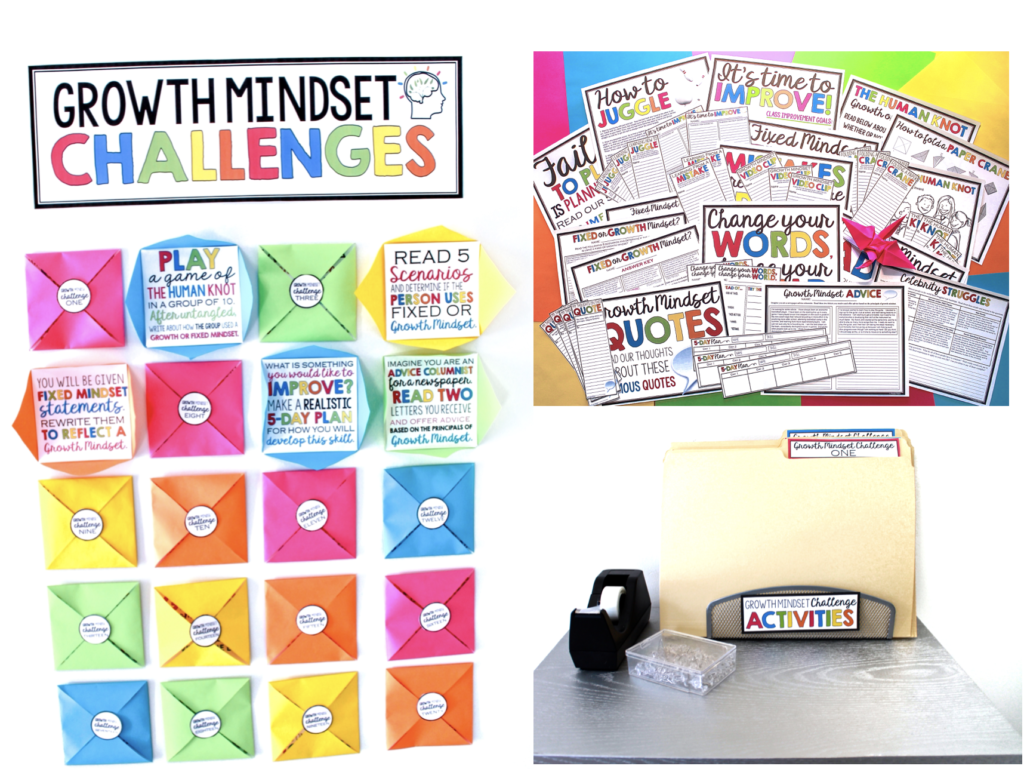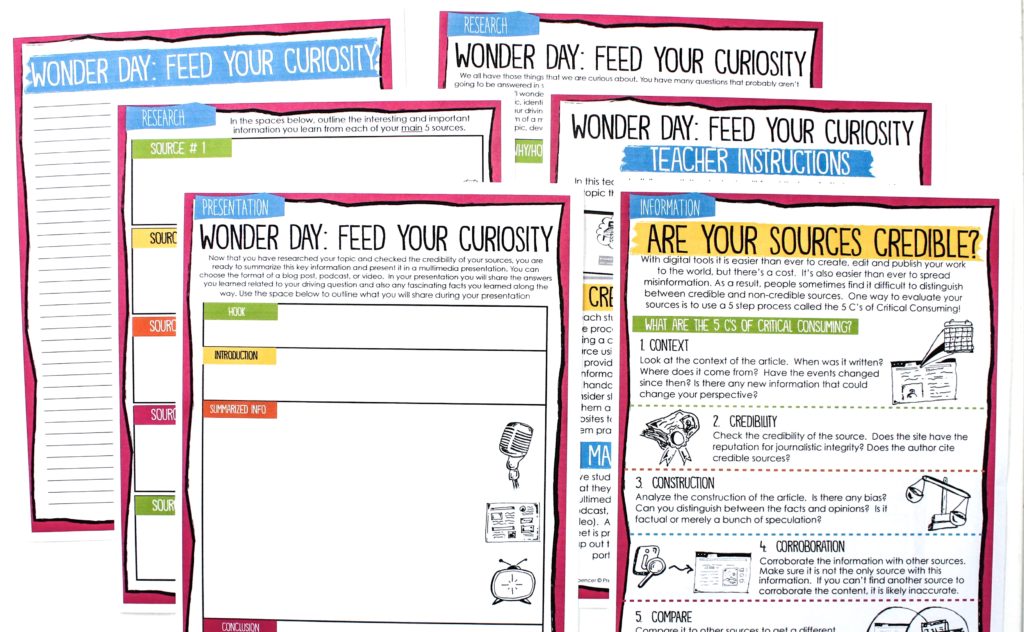PRESTO PLANS
Sent straight to your inbox
CLICK HERE TO ACCESS
Sign up to receive 10 ready-to-use ELA resources your students will love!
10 FREE ELA RESOURCES

10 Tips to Motivate Your Unmotivated Students
Are you struggling to motivate your students? It can be challenging to engage and inspire learners who seem disinterested or just all-around apathetic about the material. However, with a little creativity and effort, you can find creative ways to spark your students’ motivation and help them become more invested in their learning.
I’m sharing my best practical strategies for motivating your unmotivated students with the goal of creating a more positive and productive classroom environment for your students.
1. Get to the Root of the Issue
Before you can effectively motivate your students, it’s important to understand the root causes of their lack of motivation. There could be a variety of factors at play and how you approach each student can vary based on the reasons behind their lack of motivation. Below are some common reasons that a student might be unmotivated:
Self-Esteem Issues:
Your unmotivated student may feel like they cannot succeed because they have felt like a failure throughout their school career. In order for a student to have buy-in, they need to believe they have the skills necessary to succeed, so building up their self-esteem will be priority one.
No support:
Students need to have their basic needs met (Maslow’s Hierarchy of Needs) before they can focus on their own growth, but it is a reality that some students face challenges outside of the classroom and are lacking the support they need to succeed. Leaning on supports within the school will be important for these students (Guidance in particular).
Control:
Some students struggle with wanting to be in control and not wanting to abide by the rules of an authority figure. Developing a relationship built on mutual respect with these students will be incredibly important.
Disinterest in the subject:
Some students will simply not be as interested in the subject matter that you are teaching! For these students, providing as much choice as possible will be helpful.
These are just a few of the possible reasons that your student might be unmotivated, but it can be helpful to sit down with your students and have an open and honest conversation about their motivations and challenges. You can also try asking them to complete a survey or hold focus groups to gather more information about their attitudes and needs. By getting to the heart of the matter, you can tailor your approach to better meet your students’ individual needs and help them find the motivation they need to succeed.
2. Relationships First
Rita Pierson is well-known for saying that “kids can’t learn from teachers they don’t like,” and this is incredibly true when it comes to motivating your students. Studies show that students become more motivated when they feel a sense of connection and support from their teacher, so it’s so important to intentionally focus on building strong, positive relationships with each and every student.
Can you think of a student who struggles in all of their classes except one? Typically, they thrive in that one class because they have a good relationship with their teacher and are motivated to do well for them! Ask yourself if you have actually made a concerted effort to connect with your unmotivated students (outside of hounding them to do their work). If the answer is no, there is work to be done here that is worthwhile to improving their motivation.
So, how do you build these relationships? Here are a few practical strategies you might try:
- Greet your students as they arrive at the door.
- Take a genuine interest in each of your students outside of school work and ask them about something other than school work or your subject matter. This might be about their extracurricular activities, their hobbies, sports, movies, music, books, etc.
- Creative a positive classroom culture by integrating intentional activities that build classroom culture. I use a Classroom Challenge board where we do a couple of short activities a month that encourage kindness, collaboration, team-work, expression, and the sharing of ideas and opinions.
- Find common ground (or even fake it until you make it). If you have a student who is particularly unmotivated, but you are having trouble forming any connection with them, really dig to find something to connect on—even when it isn’t there naturally. Perhaps the student loves anime and you know absolutely nothing about it. Maybe do a bit of research on it and bring it up in conversation with them. Ask questions about what they are passionate about to form a connection when one doesn’t naturally surface.
By putting your relationship with your students first, you can create a foundation of trust and support that will encourage them to be more motivated and engaged in their learning.
3. Use Growth Mindset Language & Activities
In order for students to succeed, they need to believe they actually can. This can be a huge challenge for students who have felt like a failure in the past, sometimes for their entire school career. This is why I think it’s so important to help students develop a growth mindset, so they can believe that their abilities can be developed through effort and learning. This can help them persevere through challenges and setbacks, and ultimately achieve their goals. As a teacher, you can use language that promotes a growth mindset or integrate activities in your classroom to keep students motivated.
For example, instead of telling a student “You’re so smart!” you can say “You worked really hard on that project, and it paid off!” This helps students see that their efforts and hard work are what lead to their success, rather than just innate ability. I like to incorporate activities that provide opportunities for students to practice using a growth mindset on a regular basis. One way I do this is with the Growth Mindset Challenge where students complete short activities that promote resilience, hard-work, dedication, and improvement.

4. Hands-On Activities
It can be so easy for students to tune out during direct instruction, but it’s much more challenging to do that with hands-on activities. When students are able to actively participate in the learning process, they are more likely to be invested in the material and motivated to learn. It’s also much more challenging to simply sit back and not pay attention as the lesson requires their interaction.
Hands-on activities can take different forms, such as getting up and moving around the classroom or using manipulatives. My favorite way to incorporate hands-on activities (especially in ELA) is using classroom escape rooms. Students must work together to escape a situation using their skills to solve puzzles or riddles with their knowledge of the subject matter. I also love incorporating reading mysteries into my classroom where students must sift through a variety of pieces of evidence to find a culprit or solve a crime. You can try one for free here!

By incorporating hands-on activities into your lesson plans, you can provide your students with a more interactive and engaging learning experience where they can’t simply tune out and are actually motivated to participate.
5. Strengths-Focused
It can be natural as teachers to focus on what our students’ weaknesses and how we can improve them, but I want you to reconsider this and instead really focus on your unmotivated students’ strengths. By finding ways to connect the material to what your students are already passionate about, you can tap into their natural motivation and curiosity which will show where their natural strengths lie.
For example, if you have a student who loves sports, you might use a fun sports-based team-building activity. Or you might leave it up to your students by using an activity that allows them to further explore things they are passionate or curious about, such as by having a wonder day.

Students already know their weaknesses. In fact, they likely have had them pointed out to them for years and years. Flip the switch and really focus in on where they thrive and provide every opportunity for them to shine in this area. Compliment these students constantly! You might even intentionally have them hear you saying something about their strengths behind their back. Imagine how an unmotivated student might feel if they “overhear” you complimenting them to another student or teacher.
By leaning into your students’ strengths and putting a spotlight on them, you can create a more meaningful and relevant learning experience for them, which can help to boost their motivation and engagement. Additionally, when you help your students see how their strengths can be applied in the real world, it can help them feel more motivated to develop those skills and pursue their interests.
6. Give Lots of Choice
Giving students choice in the classroom can be a powerful way to motivate them in their learning. When students have the opportunity to make decisions about their own learning, they are more likely to take ownership of their education and feel a sense of agency. This can be especially motivating for students who feel like they have little control over their lives. Here are a few practical ways you can incorporate more choice:
- Allowing students to choose their own reading materials
- Offering different assignment and project options
- Allowing students to work alone, with a partner, or in a group
- Allowing students to work in different areas (not always at their desk)
By providing lots of opportunities for student choice, you can create a more personalized and engaging learning experience for your students, which can help to boost their motivation and success in the classroom.
7. Authentic Learning Experiences
Have you ever heard your students ask the question: “When will I ever use this in my life?” Though this question often makes teachers groan, it’s actually a pretty valid question! One effective way to motivate unmotivated students is to incorporate real-world learning experiences into your lesson plans that feel practical to students’ lives. When students can see how the material they are learning is relevant to their lives and future goals, they are more likely to be motivated to learn.
There are many ways you can bring real-world learning into your classroom. For example, you might invite guest speakers in to talk about their careers, get students to write a letter to the principal to request a change in the school (to teach letter writing), or have students prepare a resume. You might also consider bringing in new or relevant audience members when students are presenting in front of the class to make it more authentic. These experiences can help students see the value and purpose in what they are doing.
8. Use Humor
We can all remember at least one teacher from our own schooling that would always have a smile on and could get people laughing. This skill can actually be incredibly powerful in motivating the unmotivated student. When you can make your students laugh, you can create an instant connection which, over time, can help to boost their motivation and focus.
There are many ways you can incorporate humor into your teaching. You might tell jokes or funny stories, use humorous examples or anecdotes, play games, have funny posters in your classroom, or do activities that involve laughter. You can read more about my favorite ways to bring humor into the ELA classroom here.
Of course, it’s important to be mindful of your audience and to avoid using humor that might be offensive or inappropriate, but by connecting with your students through humor and laughter, you can create a more positive and enjoyable learning environment, which can help to boost their motivation and engagement.

9. Give More Time for Talking
Some students may struggle to put pen to paper, so giving opportunities to express their ideas and share their thoughts verbally may make them more motivated to participate. Conversation can also help to deepen students’ understanding of the material and promote critical thinking skills.
There are many ways you can incorporate more conversation into your class, such as using creative discussion prompts, allowing students to present their own projects or lead class discussions, or creating a safe and inclusive environment where students feel comfortable sharing their thoughts and ideas.
By giving your students more opportunities to engage in conversation—both with the whole class and with a small group of peers—you can create a more dynamic and interactive learning environment, which can help to boost their motivation and success.
10. Rewarding Vs. Motivating
While it’s natural to want to motivate your students with rewards and incentives, studies have actually shown that providing extrinsic rewards, particularly when it comes to creative work, actually do the opposite. Though rewards can have their place, they don’t do much in the way of actually improving a students’ internal motivation. Rewards are used to get students to do something they don’t want to do, where our goal should really be in fostering that intrinsic motivation.
Research has shown that students who are motivated by internal factors, such as a desire to learn, achieve personal goals, or contribute to something larger than themselves, tend to be more successful and resilient in the long run. By focusing less on external rewards and more on instilling a deeper motivation within your students using the strategies outlined in this post, you can help them become more self-motivated, engaged, and successful learners.
There you have it! I hope these tips will help you motivate even your most unmotivated students. Interested in getting more teaching tips and resources? Click here. Check out the ready-to-use ELA resources mentioned in the post below.









Search the blog for what you are teaching
GIVEAWAYS
sent straight to your inbox!
share this post